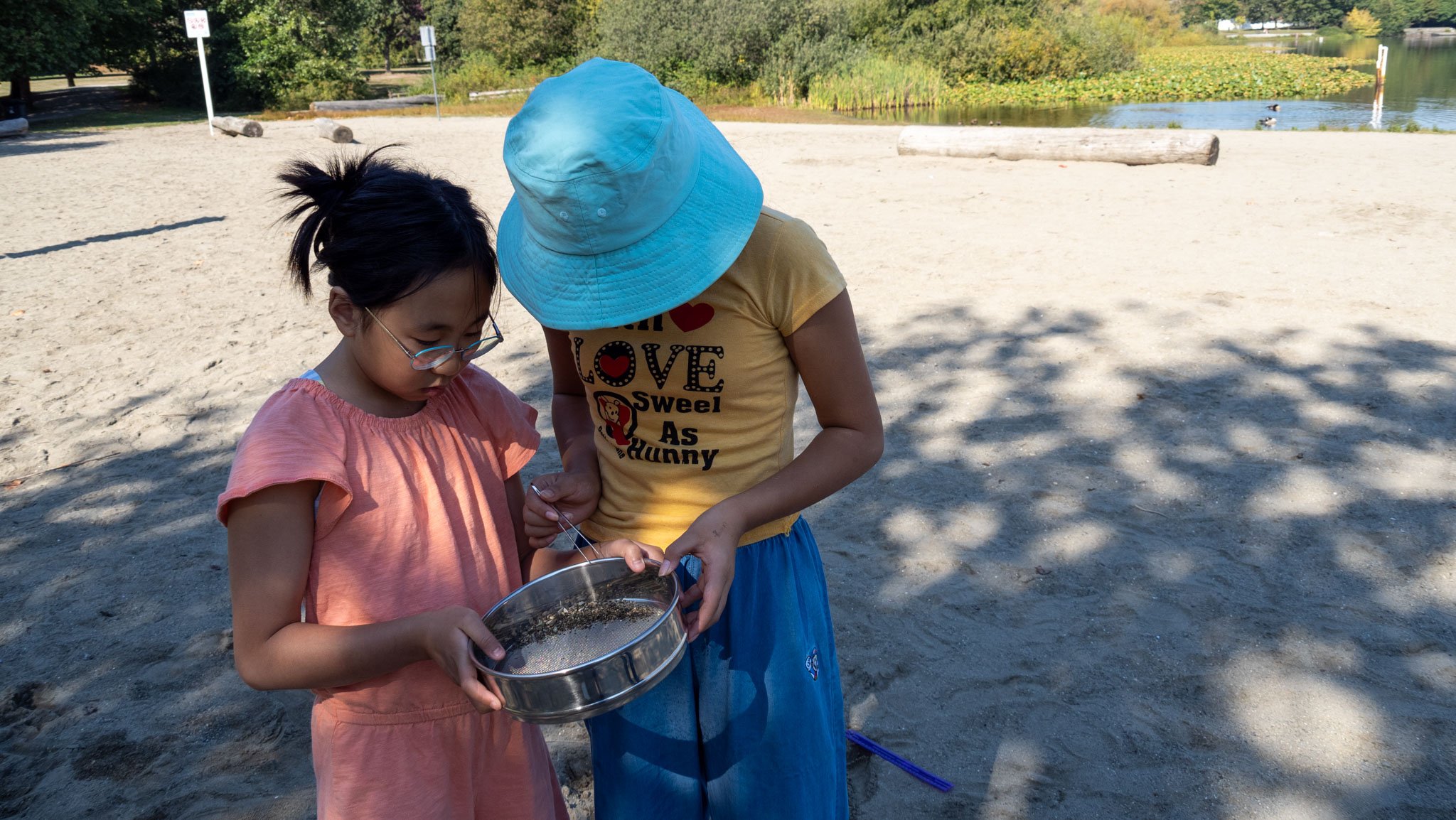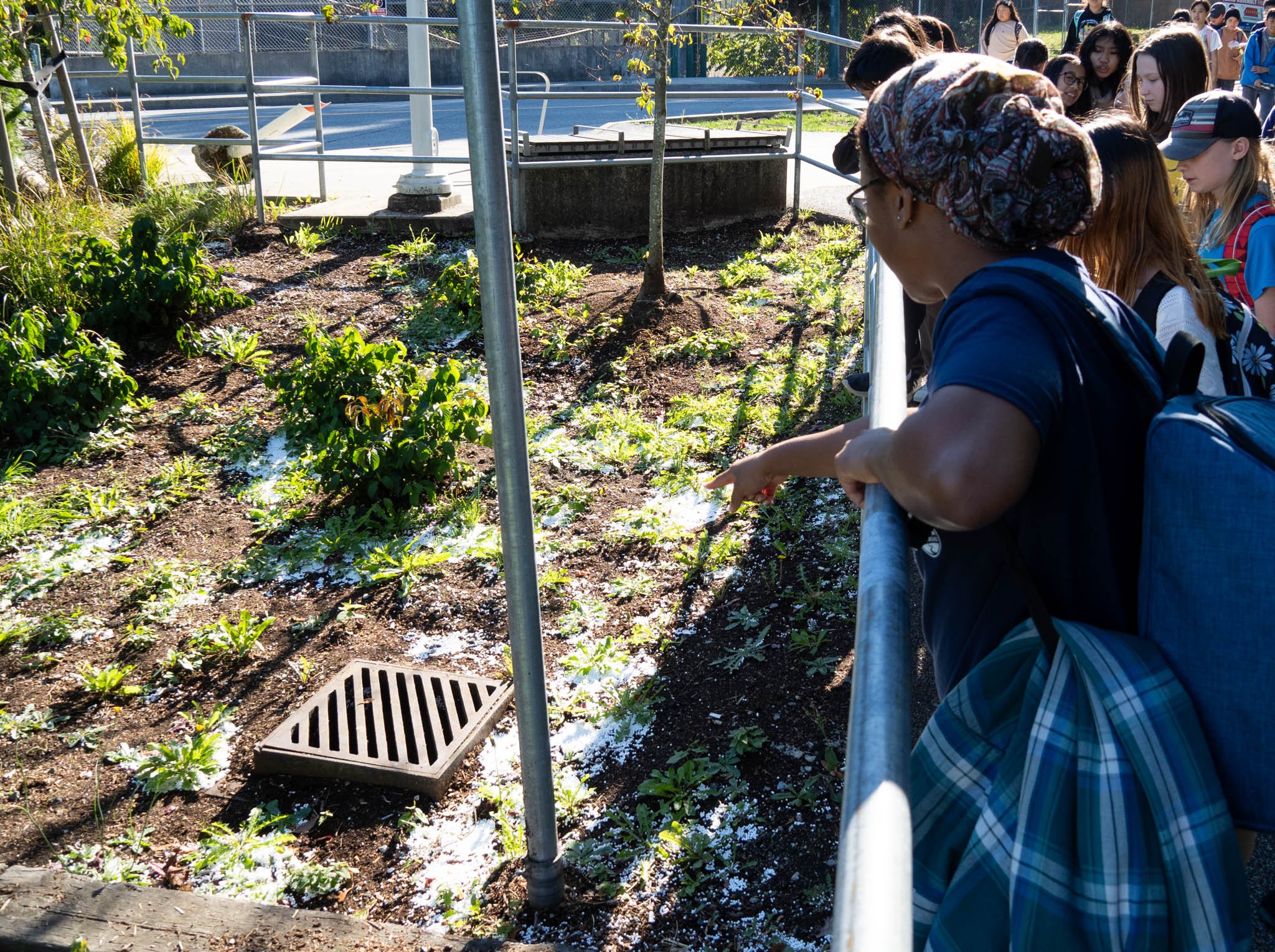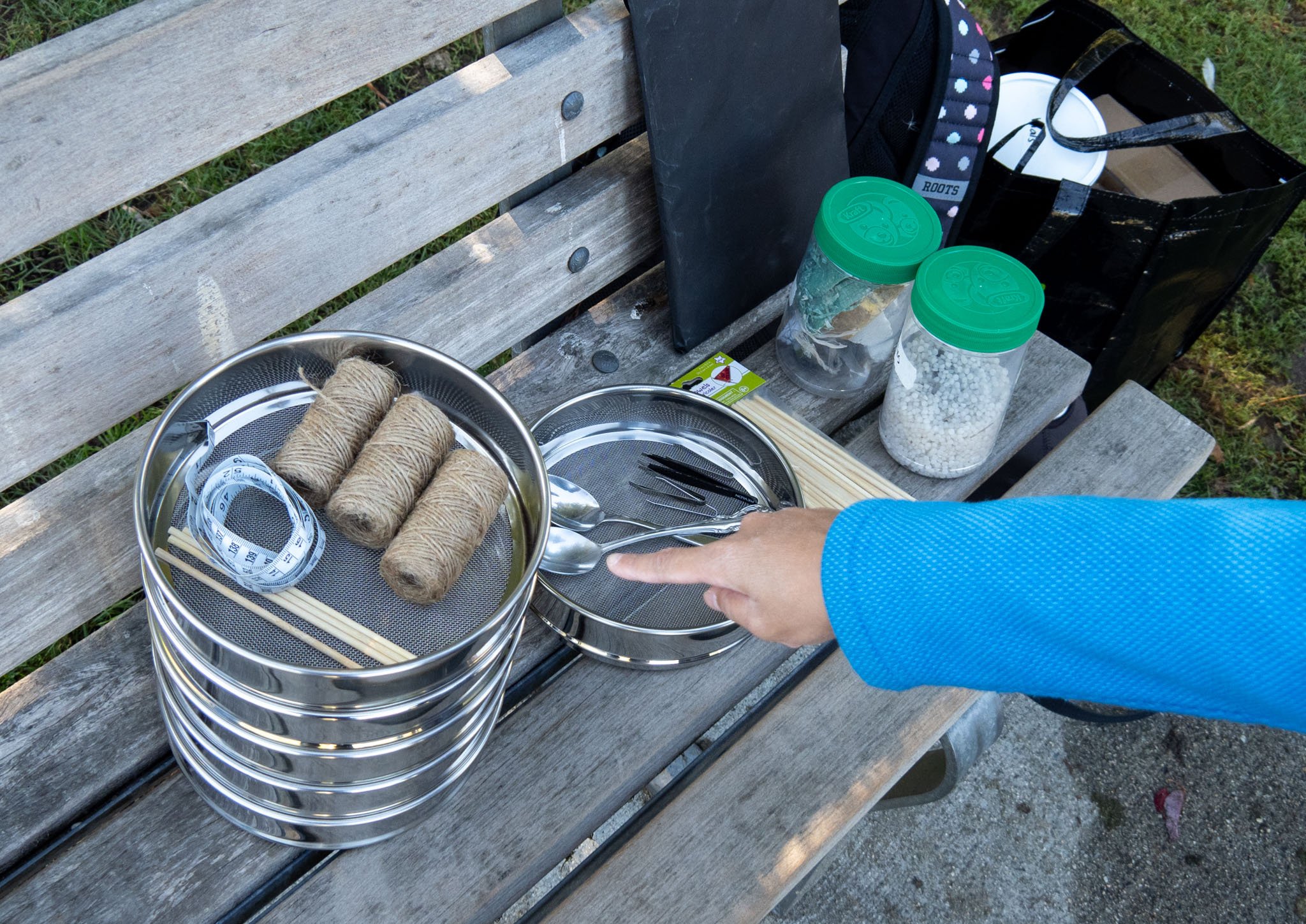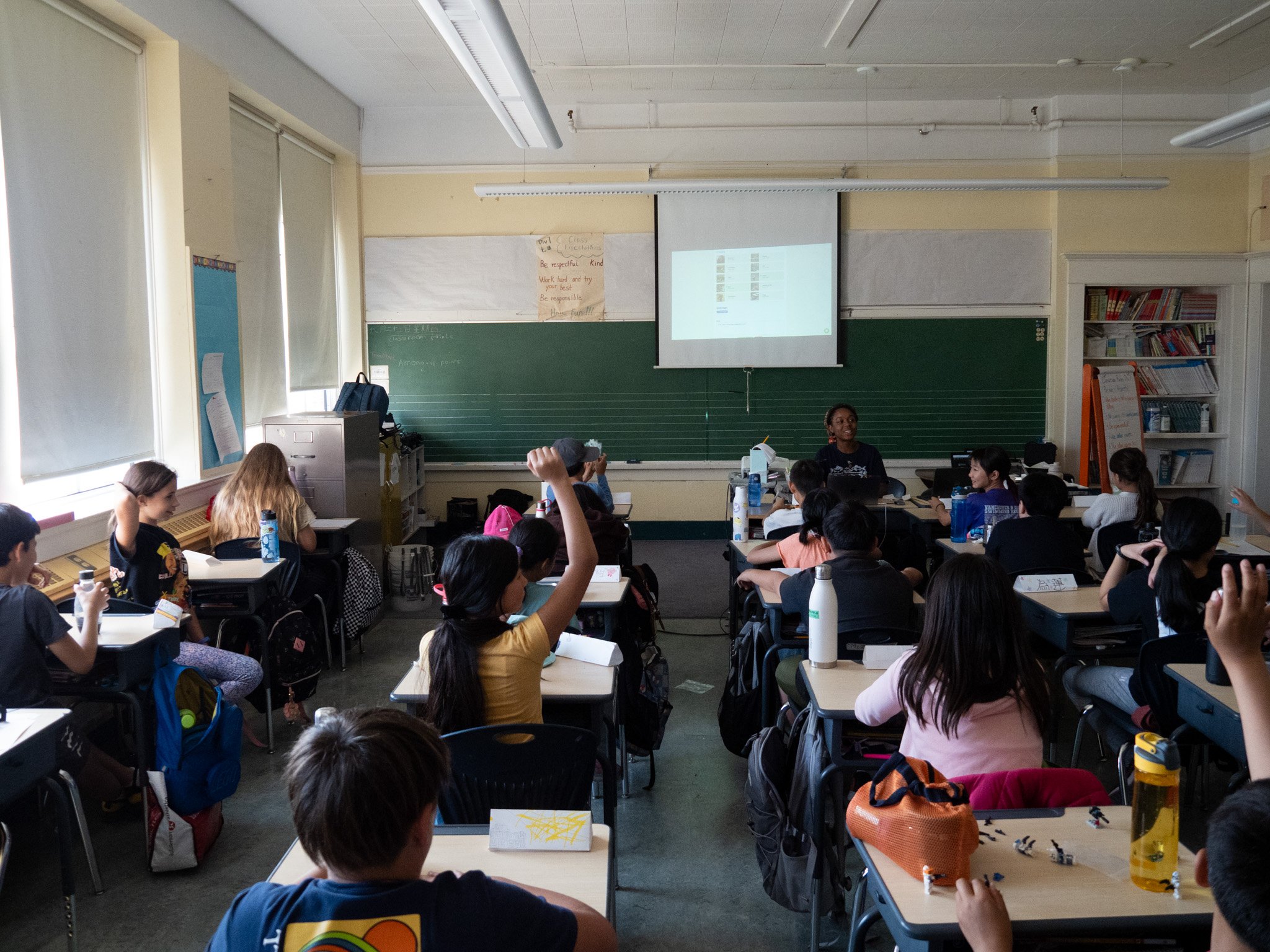Vancouver School Enhances Environmental Curriculum with Water Quality and Microplastics Testing
Vancouver School Enhances Environmental Curriculum With Water Quality And Microplastics Testing
John Norquay Elementary School in Vancouver recently introduced Ocean Diagnostics Microplastics Educational Toolkit and Water Ranger’s Water Quality Testkit in two grade six classrooms. Expanding their environmental curriculum, students engaged in nature-based learning and were exposed to real-world scientific technology. These experiential learning toolkits are designed to foster innovative thinking, instill a sense of environmental stewardship and empower students to leverage technology to address complex issues.
Norquay grade six students participated in water quality testing and microplastics sampling activities at their local Trout Lake before heading back to the classroom to analyze their findings using first-of-its-kind AI technology. By using science and technology to address environmental problems like plastic pollution and water quality, students were supported to enhance planning, problem-solving, data recording and critical thinking.
“The students were actively engaged and loved working as real scientists. They were able to examine a nearby lake and think about the changes and impact that their actions have on the local environment. They were very excited to have the chance to use real tools and to see how to share and document their findings with the wider research community,” shared Holly, grade six teacher, Norquay Elementary.

The activities began with a brief introduction on water quality, microplastics and participatory science. Then the classes set out to Trout Lake, picking up litter along the way. The students were excited to collect various garbage, dashing and darting to collect each piece, while asking questions about its presence in the environment. Both classes encountered a large polystyrene foam spill which presented an excellent learning opportunity and a real-life illustration of the challenges posed by microplastics in the environment.

Upon reaching the lake, the class divided into two groups: one assessing the water quality, the other scouring the sandy shores for microplastics. Midway through, the groups swapped roles, jumping into the activity they had yet to try.
“The [microplastics sampling] sand activity promoted students to question, plan and solve problems. In the water quality activity, students got to observe, measure and record data, using appropriate tools, including digital technologies. Students learned how to use equipment and materials safely, identifying potential risks,” noted Helen, Grade 6 Teacher, Norquay Elementary.

Students were eager to engage with the materials. As they sieved through the sand, they uncovered surprising items mostly from consumer use, which is a significant plastic pollution source. They considered what lake features might contribute to plastic accumulation on the beach and discussed human activities that might help keep the lake area clean. Exploring the difference between ocean beaches and lake beaches, students discussed how plastics travel around the globe via ocean currents.
During the water sampling, students watched in awe as the dissolved oxygen vials transitioned from clear to blue. Enthusiastically testing water for conductivity, acidity and salinity, the students discussed what these parameters mean for the ecosystem’s health. They took physical observation notes and noted a low water level after observing the typical water level lines on the lake's pipes. Students were interested to know that the low water level aligned with the ongoing drought at the time of the workshop.
After lunch the students returned to the classroom, where they enjoyed a quiet moment at their desk with microplastic word puzzles and games.
Next, the focus shifted to uploading and analyzing the data. The class uploaded their day’s observations and water quality data onto the Water Rangers' online platform. Students eagerly shared and called out their discoveries, including the charming wildlife that visited them during the activity.
Then, students used the Saturna Imaging System’s AI-based imaging technology to count, measure and categorize the microplastics discovered on the beach. Drawing insights from this educational technology, they discussed which plastics resembled natural food for wildlife. They discussed the plastics’ sources and how long they appeared to be in the environment.
“What I found most interesting was using all the new, cool tools... I would 100% recommend... It was very fun to learn how [scientists] do things and why they do it,” mentioned a Grade 6 Student, Norquay Elementary.

Using educational technology in the classroom introduces students to innovative thinking early on. As technology continues to shape our world, it's crucial to prepare students for a future where they can leverage high-tech to solve environmental issues.
Introducing nature-based learning in the classroom and learning outdoors can also spark children’s imagination and interest in environmental science. Through engaging with nature, students learn the value of caring for and protecting the natural world, instilling a deeper sense of environmental stewardship.
By integrating environmental inquiry-based activities, schools empower students to become proactive environmental stewards. Engaging in hands-on learning is not just about acquiring knowledge. It instills a sense of responsibility and action, equipping students with the tools needed to effect positive change in the world around them.
Explore Water Rangers and Ocean Diagnostics Toolkits for your classroom or environmental program.
About Ocean Diagnostics Ocean Diagnostics is a Canadian environmental impact company dedicated to protecting our planet from threats like plastic pollution and biodiversity loss. At the forefront of innovative technologies and laboratory capabilities, they help researchers and community scientists to collect and analyze essential data related to environmental DNA (eDNA) and microplastics. Most importantly, Ocean Diagnostics offers a Microplastics Educational Toolkit that aligns seamlessly with our water quality educational kits!
About Water Rangers Water Rangers is a Canadian non-profit organization dedicated to promoting water literacy and environmental stewardship in communities. We do this by building accessible, easy to use water quality test kits to empower folks to monitor the quality of their local water bodies. Our water testing kits are used by community monitoring groups, educators and conservation authorities.
Learn more about Water Rangers and their work.
